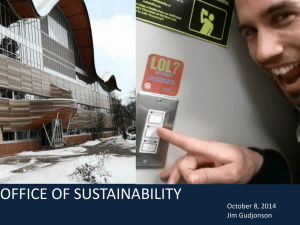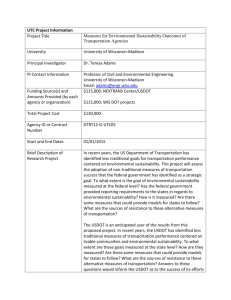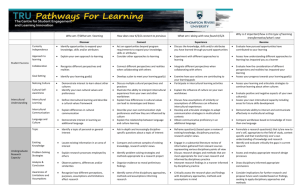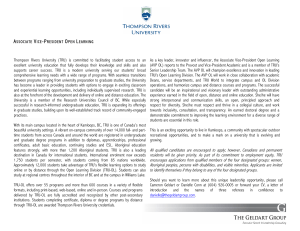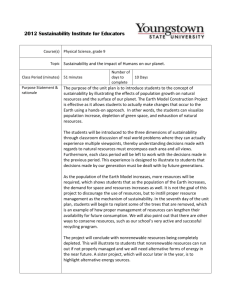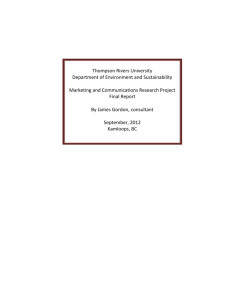Course Sustainability Worksheet
advertisement
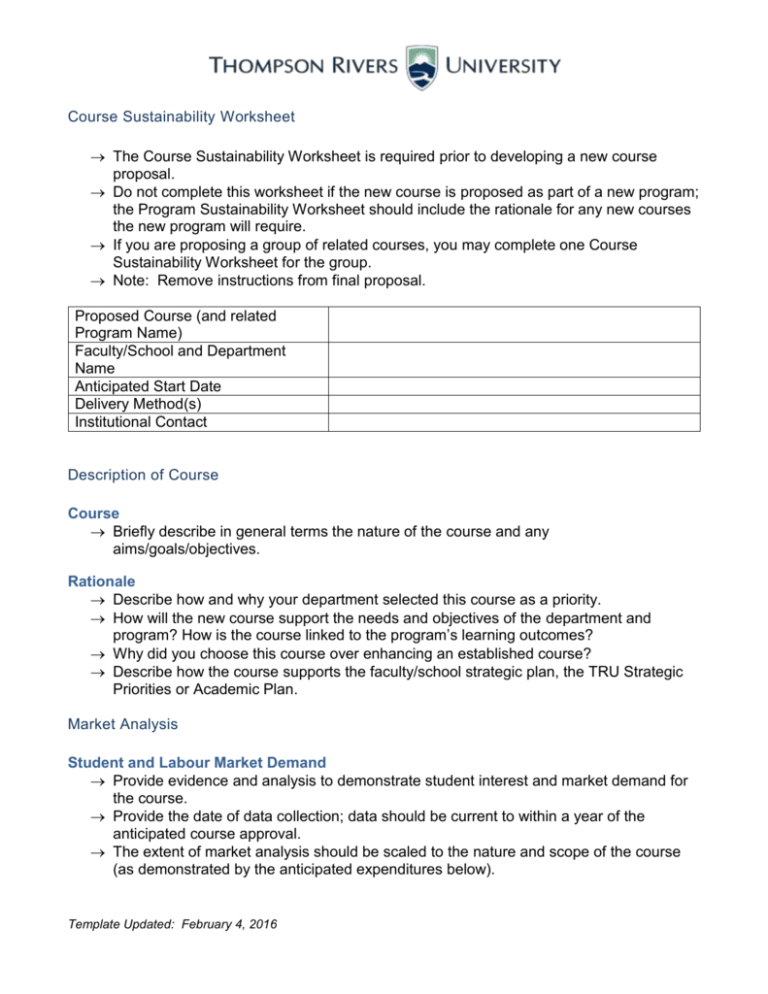
Course Sustainability Worksheet The Course Sustainability Worksheet is required prior to developing a new course proposal. Do not complete this worksheet if the new course is proposed as part of a new program; the Program Sustainability Worksheet should include the rationale for any new courses the new program will require. If you are proposing a group of related courses, you may complete one Course Sustainability Worksheet for the group. Note: Remove instructions from final proposal. Proposed Course (and related Program Name) Faculty/School and Department Name Anticipated Start Date Delivery Method(s) Institutional Contact Description of Course Course Briefly describe in general terms the nature of the course and any aims/goals/objectives. Rationale Describe how and why your department selected this course as a priority. How will the new course support the needs and objectives of the department and program? How is the course linked to the program’s learning outcomes? Why did you choose this course over enhancing an established course? Describe how the course supports the faculty/school strategic plan, the TRU Strategic Priorities or Academic Plan. Market Analysis Student and Labour Market Demand Provide evidence and analysis to demonstrate student interest and market demand for the course. Provide the date of data collection; data should be current to within a year of the anticipated course approval. The extent of market analysis should be scaled to the nature and scope of the course (as demonstrated by the anticipated expenditures below). Template Updated: February 4, 2016 Generally, for a course proposal you do not require a full third-party market analysis. However, any assertions of student interest or labour market demand should be supported by evidence. Examples of acceptable evidence are listed below. Please attach all supporting documents as appendices. Possible sources of evidence include: Industry advisory board recommendation Secondary research about industry trends (e.g. news or trade journal article) Popular course enrollments among current students Consultation with a TRU division (TRU World, OL Planning & Effectiveness) Expert advice from alumni industry leaders Enrollment data at peer institutions Phone interviews with peer institutions Analysis of online job postings Surveys of the program’s target market Competition Briefly review related courses at TRU or other relevant post-secondary institutions. Projected Course Enrollments Year 1 Year 2 Domestic Course Enrollments International Course Enrollments Total Year 3 Year 4 Year 5 Course Sustainability Financial Sustainability Staffing Model Describe the need for faculty and administrative support. Will there be extra pressure on other academic or non-academic divisions? Projected Expenses If the course will be absorbed into the existing faculty workload, please describe how the faculty workload plan will accommodate the new offering (e.g.: will the new course replace an existing course, or will an existing course be taught less frequently?). If the course will require new faculty resources, please describe the projected expense and the funding source. If the course will require any additional resources, please describe the projected expenses and the funding source. Template Updated: February 4, 2016 Attach any consultations with appropriate units (Finance, Library, Facilities, etc.) regarding baseline expense projections. Risk Assessment (if applicable) Describe any applicable risks and how you plan to mitigate. The Risk Management Office is available to provide support if necessary. Appendices Include all that are applicable: Supplementary market analysis data Enrollment trend report 3-year departmental workload plan 3-year facilities allocation plan Comments from any affected faculty/school/division Approvals Dean: Dr, Christine Bovis-Cnossen Provost and Vice-President Academic Template Updated: February 4, 2016 _____________________________ Date _____________________________ Date



